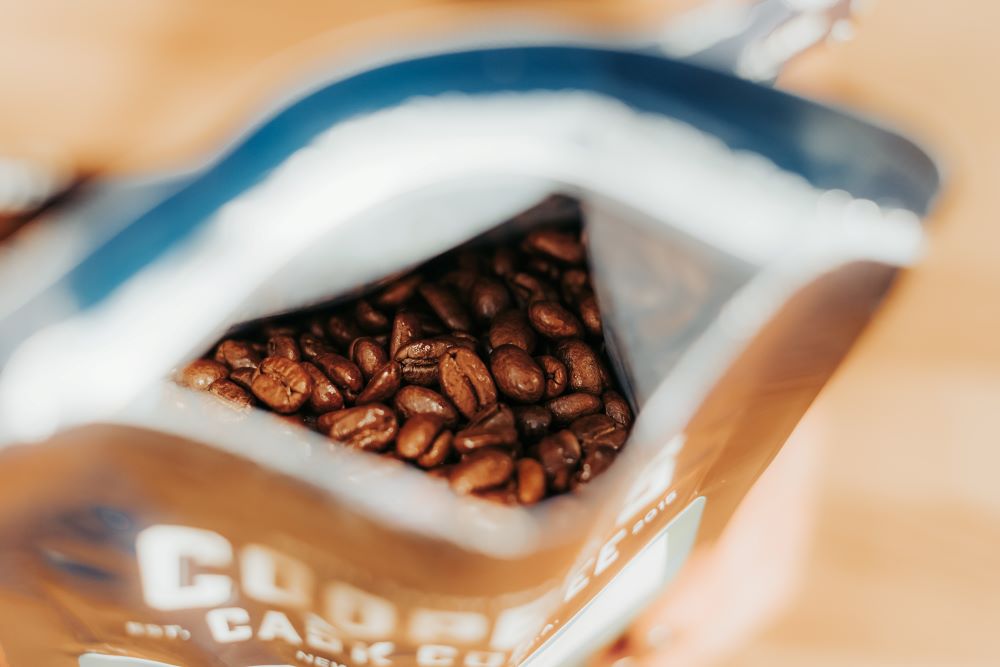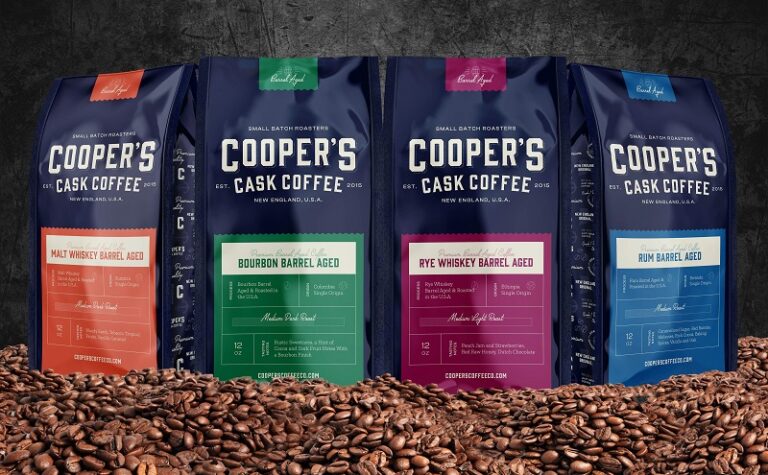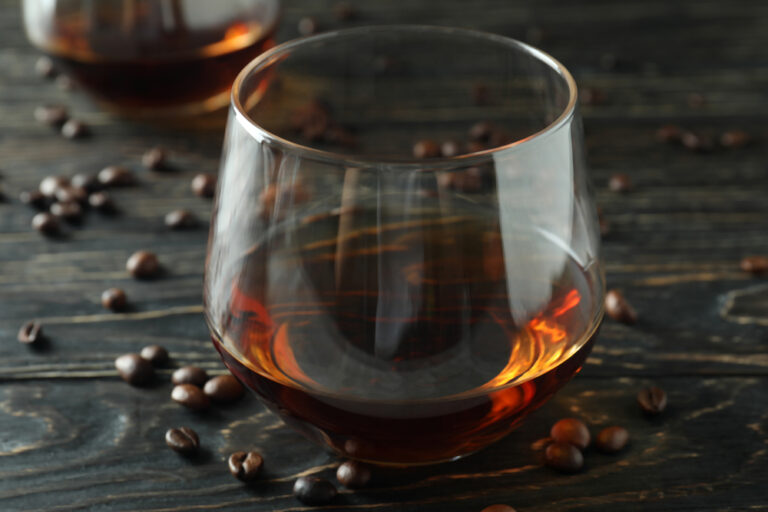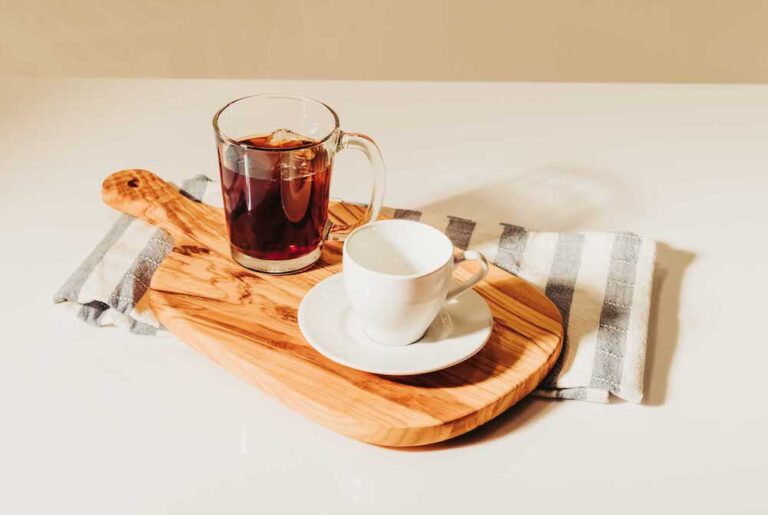Ahhh, the morning joe. There’s nothing like the smell of coffee brewing to draw the newly awakened to the kitchen counter. Or to the company Kaffeeklatsch. Either way, it’s a delight we coffee lovers look forward to in the a.m.
That’s why so many of us prefer Cooper’s Cask Coffee as whole bean coffee. Yes, we grind it to make a fine pot of java, a delicious serving of French press, or a powerful shot of espresso. But why buy whole bean coffee and do the work of grinding when it can be done for you easy-peasy?
The answer is simple: freshness. From when it’s picked on the farm to when it’s poured in your cup, the best way to keep your coffee fresh and tasting its best, is through whole bean coffee.
You can contact us with your coffee questions. The Cooper’s Cask Coffee team loves coffee, and will more than happily nerd out on the subject to help educate anyone about making a great coffee experience. Or try out our coffee finder tool and discover the flavors you’ll savor. And read on to understand why whole bean coffee is wholly delicious.
The Bean That Isn’t a Bean
Let’s start with a misnomer. Whole bean coffee isn’t made from beans because there’s no such thing as a coffee bean. Well, there is, sort of, because we all call them “coffee beans,” and that won’t end anytime soon.
But the bean part of coffee? That’s actually a seed.
To get technical, the coffee plant flowers and those pollinated flowers become coffee cherries. Yes, it’s a fruit, sometimes called a “stone fruit,” and yes, it’s edible. Most people describe the taste of a ripe coffee cherry as somewhat sweet and fresh. It can have hints of other berries, hibiscus, and some have said mild tobacco notes.
Interestingly, the coffee cherry doesn’t taste like the coffee you’ll get in your cup. That’s because the roasting process develops the flavors from the bean. More on that shortly.
Most cherries contain two coffee seeds (“pips”), with the flat sides together. However, some coffee cherries only have a single seed, called a “peaberry,” like our Tanzania Peaberry Medium Light Roast Coffee.
So whole bean coffee is really whole seed coffee, but we’ll keep that as our little secret, yeah?
From Farm to Bag: the Whole Bean Coffee Journey
It’s quite a trip from soil to service, from bean to brew, with quality checks all along the way. It all starts at a farm somewhere around the world.
Single Origin Coffee All the Way
At Cooper’s Cask Coffee, all of our coffees are single origin coffees.
- When we say “single origin,” it means the coffee is sourced from a single region in one country. For example, our Brazil Medium Dark Roast Espresso coffee beans are all sourced from a single region in Brazil. Single source can get even more specific.
- Our coffee beans also frequently arrive from a single producer in that region, who grows only specific coffee crop varietals with specific flavor profiles.
- From those crops, only the Grade 1 beans of the highest taste scores make it to Cooper’s Cask Coffee for roasting.
Why do we go to all this effort about whole bean coffee? It’s because when we use single origin coffee, Cooper’s Cask Coffee delivers tasting notes and flavor profiles that are unique and true to that region.
It’s not a blend of different beans from different locales to make a generic cup of joe, like what you get with huge corporate coffee companies. We believe in the delicious flavor of real coffee, as dictated by the soil, by the humidity, by the varietal, and finally, by the skilled quality of the master roast.
Our team stays in the mix, too, constantly cupping and testing the roasted product. We tweak what needs tweaking to ensure not only the quality of the coffee but that the flavor profile stays consistent and delicious.
Picking the Fruit
Money doesn’t grow on trees (thanks, dad). Also, neither does coffee. The Coffea species that gives us our beloved coffee fruit is actually a shrub.
Yeah, it’s a shrub that can reach 20 feet in height, but if you really want to win the esoteric category on trivia night, you’ll say coffee grows on a shrub and not on a tree. (PS- now you know the real reason the Knights Who Say Ni wanted a shrubbery).
It takes around 3 to 4 years after planting a coffee shrub before it starts bearing fruit. Most crops are harvested once per year, though some regions in Colombia can have two flowerings per year, and hence two crops.
Generally, coffee is harvested by hand, because it’s frequently grown at mountainous, higher-altitude farms. However, extremely large farms that are located where the land is fairly flat may harvest their cherries by machine. Either way, the berries are either selectively picked for just the ripe cherries or strip picked for all the berries on a branch.
Cleaning the Fruit from the Seed
To get to the coffee seed—er, “bean”—you have to remove the pulpy fruit surrounding it. That can happen in one of two ways.
The Wet Method
The coffee cherry heads to a pulping machine, which separates the outer skin and the pulp from the beans. This leaves only the parchment skin, a layer of cellulose that protects the bean. It’s called “parchment” for its appearance when it dries.
The wet beans are then separated by weight and size and eventually end up in water-filled fermentation tanks. Here they remain from 12 hours to 4 days, during which time the mucilage—a slick layer clinging to the parchment—dissolves away.
From here, the beans are rinsed and prepared for drying.
The Dry Method
This method is the same way coffee cherries have been processed since somebody said “man, I could use a good cup of mud right now.”
Still used wherever water resources aren’t plentiful or the farms are smaller, the dry method involves laying the freshly picked cherries out on large surfaces to dry in the sun.
To keep the fruit from spoiling and thus ruining the beans, they’re raked and turned throughout the day and then covered at night to keep out moisture. This might take weeks to fully complete.
Drying the Beans
- The wet method requires the cleaned beans be either laid out in the sun and dried or machine-dried.
- The dry method dries the fruit and the beans.
Both achieve 11% moisture content, the target goal of drying.
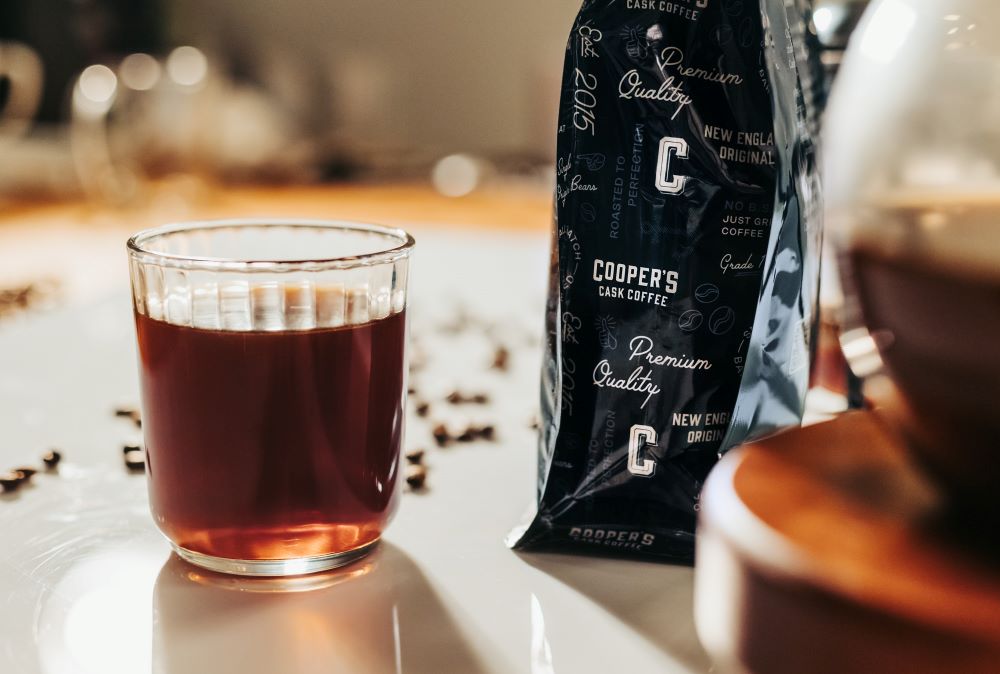
The Final Steps Before Export
We’re almost there! The whole coffee beans need some final processing, called “milling,” before they’re shipped off to eventually arrive at Cooper’s Cask Coffee for roasting.
Hulling the Beans
These whole coffee beans head to a special hulling machine that does 1 of 2 things:
- For wet processed coffee beans, the hulling machine removes the parchment layer.
- For dry processed coffee beans, the hulling machine removes the outer skin, the dried fruit, and the parchment layer.
Time to Get Judgemental
Yes, we’re feeling pretty judgy by now. As in, the beans have to be sorted and graded. They get separated by size, weight, and then visually for color flaws and other imperfections.
At last, we have the whole green coffee beans, tagged and bagged, ready to ship across continents and oceans to our little piece of coffee heaven, just a good jog from Narragansett Bay in Rhode Island.
Barrel Aged Whole Bean Coffee
These green coffee beans can get roasted as-is, creating the authentic flavor profiles of our single origin coffees.
However, though all our coffee is single origin, our Cooper’s Cask Coffee barrel aged choices add in an extra step before roasting.
To infuse the barrel aged flavors, we take those green coffee beans and store them in a retired spirits/wine aging barrel for weeks or months.
It’s All About the Barrel
As the main component of our barrel aging technique, we don’t just take any barrel. We choose the right supplier based on the quality of spirits kept in those barrels and on earth-conscious sourcing of them.
Then we choose the specific single origin coffee for each barrel type based on the flavor profile of the roasted bean. We make sure that the flavors that master roasting creates for the coffee beans works in delicious harmony with the infused flavors from the barrel.
Roasting the Whole Bean Coffee
And now we reach the magic, the point where all the care and effort from the farm to the barrel are brought to flavorful perfection.
Keeping It Green
Our master roasting process doesn’t start until an order is placed. The green whole bean coffee stays in controlled-climate conditions until our customers place an order. That way the coffee you receive is the freshest roast possible. Our head roasters even hand-write the roast date on your coffee so you know for a fact how fresh it is.
The Best Small Batch Roasting Equipment for Whole Bean Coffee
First off, we love a classic coffee roasting machine. In fact, we still have one of these old barrel roasters. They work by having fire heat up the rotating barrel, and the beans inside it roast by contacting the hot barrel surface as they tumble.
Yeah, it’s cool, it’s fun for coffee nerds like us, and the process is hipster-sweet with a retro vibe and hand-controlled attention.
However, we also want to make the best coffee possible, as consistently as possible, for our customers. So while Smaug sits and awaits those days when we fire it up for fun and for a vintage taste of the ol’ bean, for our Cooper’s Cask Coffee products we use the Loring Smart Roaster.
The Loring machine air roasts our coffee beans with a 1400-degree airflow. It provides exacting roast levels and times, and doesn’t allow any beans to overoast against a metal surface—which can happen when Smaug gets in a mood.
Not only is the roast cleaner and more consistent, it’s also safer. In a traditional roaster, the chafe—inevitable bits of leftover parchment or skin from the milling process—could catch on fire!
With the Loring roaster, there’s no direct flame on a barrel or anywhere around the beans. It’s the best way to do small batch roasting…like ours.
The Cooper’s Cask Coffee Roasting Process
First, our team takes the newly arrived beans and does several different roasts. We’ll take small amounts of the beans and roast them from light profile to dark, all the way across the roast spectrum. Every 5 degrees of increased temperature we pulled some beans from the roaster.
We let those newly roasted test beans rest for a day and then do a personal cupping. During this tasting, we compare notes, examine the beans and the brewed coffee, and create a general profile. We do the profile from start to finish because we know what to expect and can compare the roast to expectation to achieve the best flavor experience accuracy.
As part of achieving the best flavors, we might change the speeds of certain phases of the roast. We record that in our roaster software so that if our next order’s roast is from the same whole bean coffee lot, we can ensure they get roasted exactly as before for the correct flavor production.
No Roasted Bean Stockpile
Simply put, we refuse to stockpile roasted beans. Some coffee companies do that to expedite orders. We don’t, because the freshness of roasted coffee starts to decline at about 7 to 10 days after roasting.
There are also other companies that over-roast their coffee for a very dark and surprisingly bitter flavor experience. Is it so that they can claim the “French Roast” crown? Nope. Over-roasted coffee hides long shelf times behind that bitter bite. Thanks…but no thanks.
We roast orders only when they’re ordered. Look for the roast date, lot number, and initials on your next bag of Cooper’s Cask Coffee. When you open the bag and smell the amazing aroma, we think you’ll appreciate our extra care in making your coffee experience the best possible.
Why Do a Cupping with Each New Lot?
Just because coffee beans come from the same region doesn’t mean they all have exactly the same flavor after roasting. We check for cupping because the condition of the bean changes the roast. If seasonal changes affected one lot but not another, or the humidity was different during the drying process, or more environmental factors came into play—that affects the final flavors. We make sure that the roast matches the bean to achieve the flavor profile we desire.
Lighter Roasts vs Darker Roasts
Have you ever noticed how darker beans look more oily or shiny, whereas lighter roasts appear dryer? That’s an effect of the roast length.
Darker roasts cause the bean to exude more of its internal oils, whereas lighter roasts let the bean retain more of its oil.
The more oil that resides on the outside of the bean, the more chance there is of the oil turning rancid if the beans aren’t used within peak time. Also, if the coffee is really oily, there’s a possibility it’s old, as the oils do eventually leech out if the beans get old enough.
That doesn’t mean your dark roast is going to go bad quickly! John, one of our founders and consummate coffee whisperer, will sometimes drink Cooper’s Cask Coffee that’s up to 7 months old, just to test the longevity of the flavors.
Old coffee won’t kill you. However, it may not thrill you, either. So the sooner you can enjoy your Cooper’s Cask Coffee after you open your bag, the better. And we’ll back up your pleasure with free shipping on orders over $50 and our money back guarantee.
A Note About Roasting Flavor
Here’s something to keep in mind when choosing your roast level. Lighter roasts allow you to taste more of the original coffee flavor. Darker roasts give you more of the roast flavor and less of the bean profile.
Related topic: dare to compare whole bean vs ground coffee.
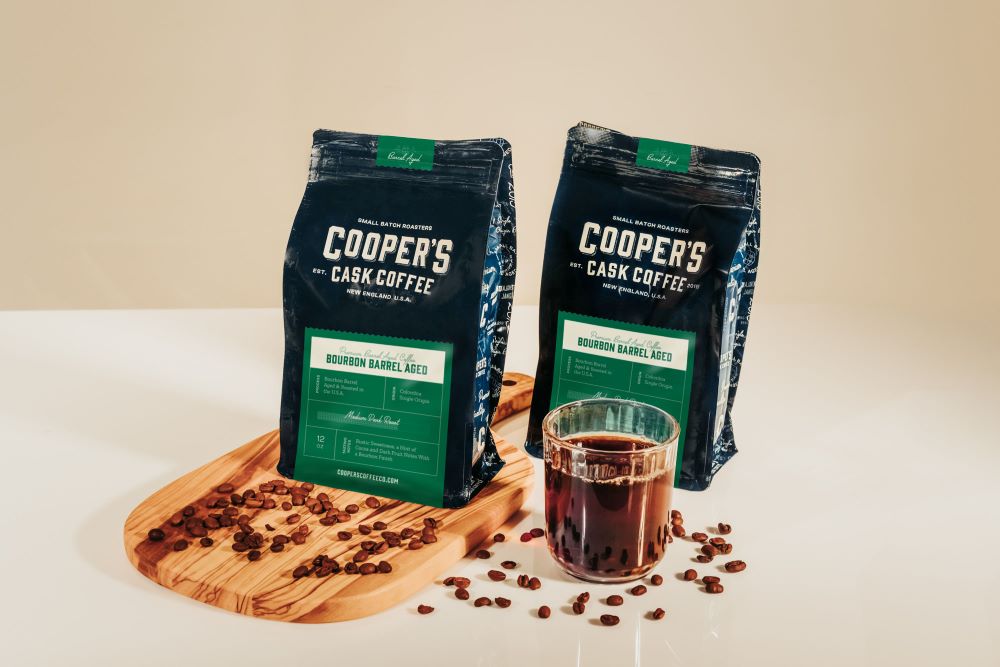
Why Whole Bean Coffee Means Longer Freshness
We totally understand that buying ground coffee can make life a little easier. When you order one of our coffees—Rwanda Medium Roast for example—you can choose to have whole bean coffee sent to you, or ground coffee. We even give you choices for how you want your grind!
Coffee Oxidation
Coffee’s main enemy (besides bad brewing techniques!) is oxygen. When coffee has been roasted, contact with air causes loss of flavor, and eventually the rancid taste of old coffee.
It’s kind of like how iron rusts when exposed to the air. The solubles within the coffee start to degrade as soon as the air hits it. As connoisseurs, we have pretty sensitive palates and can quickly discern when coffee has passed its peak flavor time. However, most peoples’ palates don’t really notice the flavor differences in the first 3 to 4 weeks.
But after a month? Your favorite coffee might start losing its flavor and aroma, becoming more bland. The deterioration continues, and eventually, the oils turn rancid. And that makes a bad cup of coffee.
Ground Coffee Oxidizes Faster
The problem with keeping ground coffee at peak freshness is that grinding it creates more surface area for air to get to.
Think of a baked potato. Fresh out the oven, that thing is hot as the sun. The core will stay hot for a long time, too, if left untouched.
But when you cut it open and spread it out? It cools much faster because there’s more surface area for air to reach and exchange heat. It works the same way for ground coffee. More of the coffee bean (now in tiny pieces) is exposed to oxygen.
Related topic: how long does coffee last?
How to Keep Your Coffee as Fresh as Possible
We have some tips on how to keep your Cooper’s Cask Coffee at its freshest.
Buy the Right Amount of Coffee
A lot of people will buy lots of coffee at the store and hang onto it, so that they don’t have to make multiple trips. With Cooper’s Cask Coffee, buy what you can drink in a couple of weeks to a month. If you join our subscription service, you can set the amount of coffee and frequency of shipment, so that you never have to go get more coffee. How’s that for easy-peasy?
Keep the Coffee Bag Closed Until Ready for Use
We know, we know—”but it smells so good!” You might want to stick your nose right in there, but resist the temptation. And don’t take it out of the bag to leave in the auto-grinder. Remember: air exposure is the enemy of good coffee.
Store Your Whole Bean Coffee in a Cool, Dry Place
Keep your bag of Malt Whiskey Barrel Aged Coffee, or your Wine Barrel Aged Coffee Boxed Set in a cool, dry place out of the sun and away from heat sources. Keeping them away from heat keeps the oils from leaching out of the beans more quickly.
Sorry, But Don’t Freeze Your Beans Either
What’s more cool and dark than your freezer, right? Here’s the problem: if the container holding your coffee isn’t airtight, that can invite condensation. So avoid extremes of heat and of cold.
Airtight Containers Are Your Friend
If you have a container that’s airtight and can hold your coffee bags, by all means—do it. The less airflow around the bags, the less chance of exposure to oxygen.
How to Tell If Your Coffee Has Gone Stale
There are a few telltale signs that your coffee has passed its peak of yum. Sure, you can still drink it. The question is: do you want to?
- Smell. If your coffee smells dusty, mildewy, or kind of flat. It’s kind of like the bouquet of an older vacuum cleaner’s exhaust. Or maybe your Uncle Dale’s cigar ashtray that he never cleans.
- Taste. Make a cup of coffee and let it cool, then take a taste test. If it comes across more sour and bitter than usual, it’s likely your coffee has turned.
- Feel. Grind some of the coffee and rub that between your fingers. Stale coffee is grainy, dry, and doesn’t stick together.
- Crema. You pull your favorite espresso, and see little to no bubbles? It’s probably old. And sad.
- CO2. Truly fresh beans create CO2. Put 1/2 cup of beans in a Ziplock baggie overnight. If the bag has puffed up by morning time, the beans are fresh.
About the Taste Test
Keep in mind that the brewing technique can also affect the sour or bitter notes on your tongue. Some culprits for poor taste can include:
- Under extraction
- Over extraction
- Too much coffee in the filter
- Too little coffee for the brew size
- Wrong grind size for the brewing process
- The coffee maker is dirty
- The water is too hot
- The water tastes bad to begin with
- The coffee cup is plastic
You might want to check these out before you decide your bag of beans is bound for the bin.
Let’s Get Fresh Together
Cooper’s Cask Coffee has earned 7000 4 and 5-star reviews on Amazon for all of our products, and as a seller. Not to toot our own horn, but we’re that good on Amazon.
Here’s an inside scoop: our coffee is even fresher if you order from the website! When you place your order or make your subscription directly with us, we roast and ship fresh per order. Purchasing straight from use gets you the freshest, most flavorful single origin coffee possible.
Remember, Cooper’s Cask Coffee always offers a 100% money back guarantee. Simply ask for a refund or to try another of our coffee choices at no charge (shipping included!).
If you have any questions about how to keep your Cooper’s order as fresh as possible, contact us, and we’ll do our best to help. We love to geek out about good coffee!
The daily grind is a good thing with our whole bean coffees. Find your coffee today!
Sign up for our email list and get 10% off your first order!
